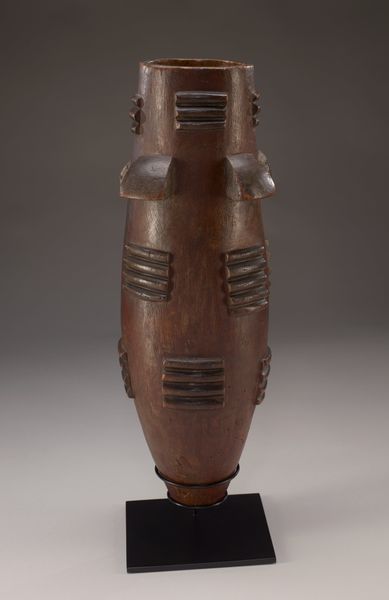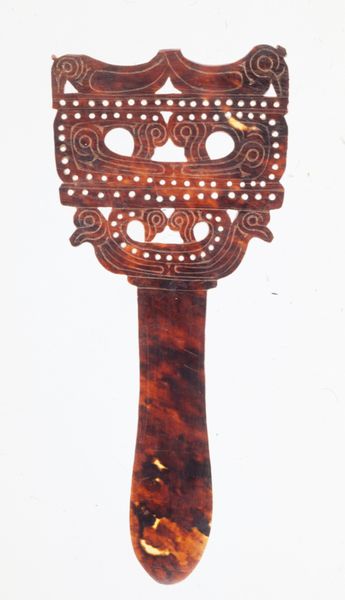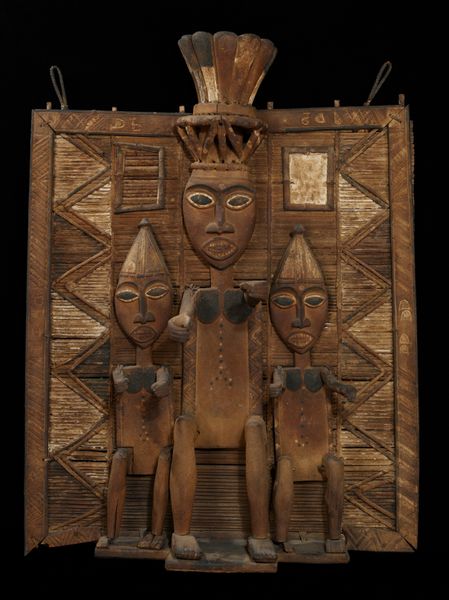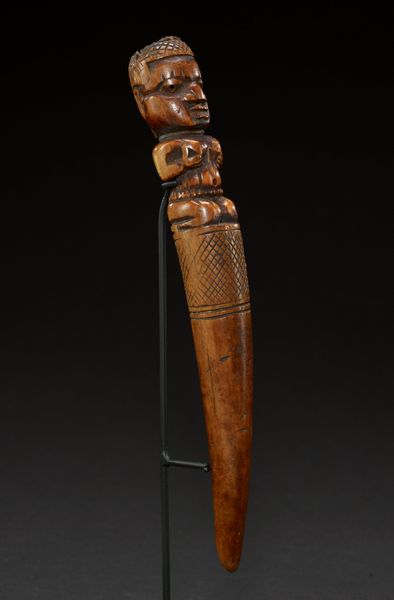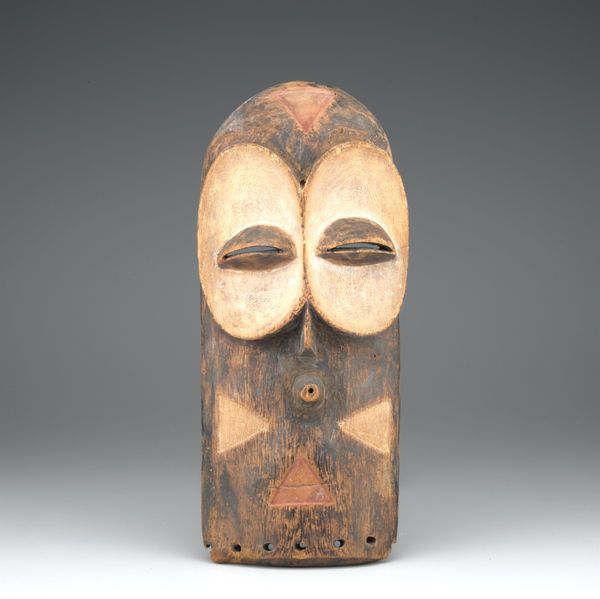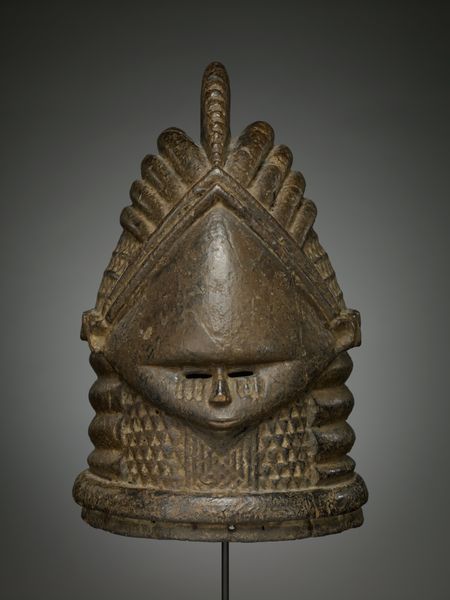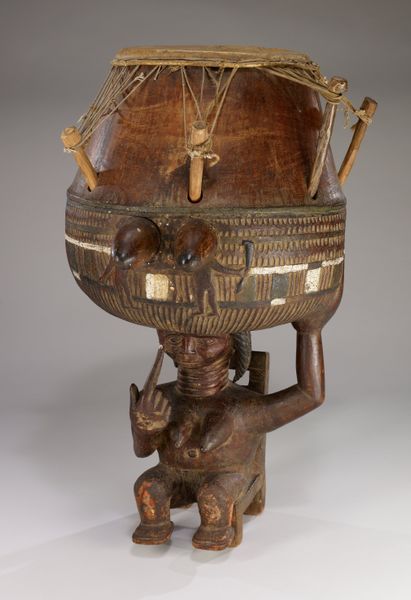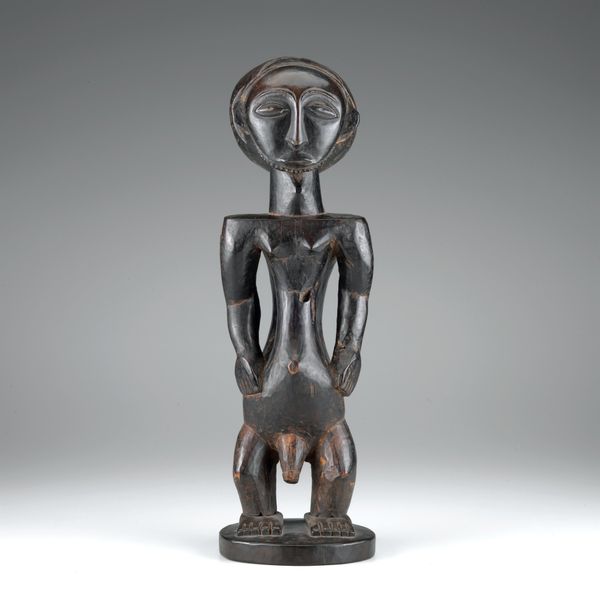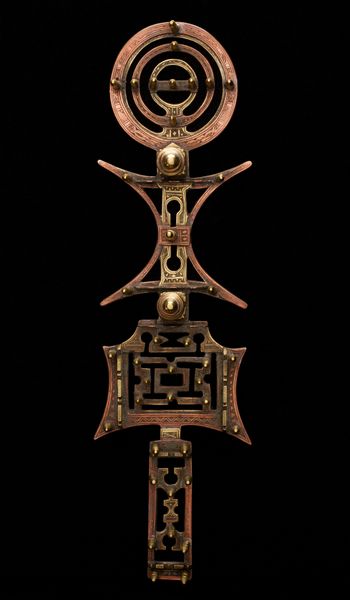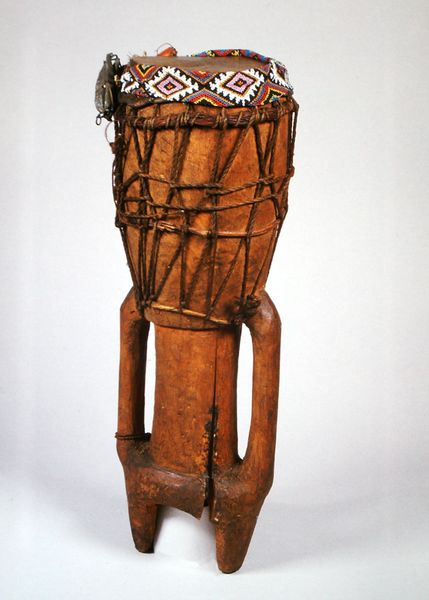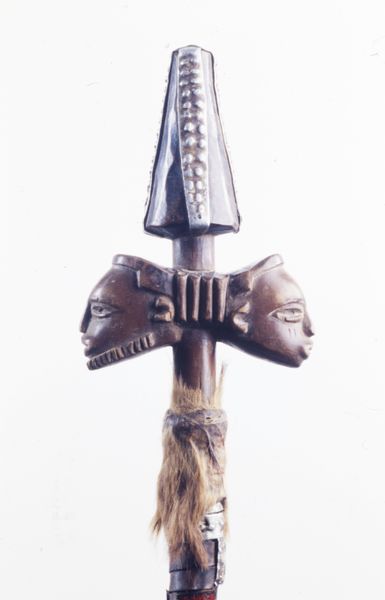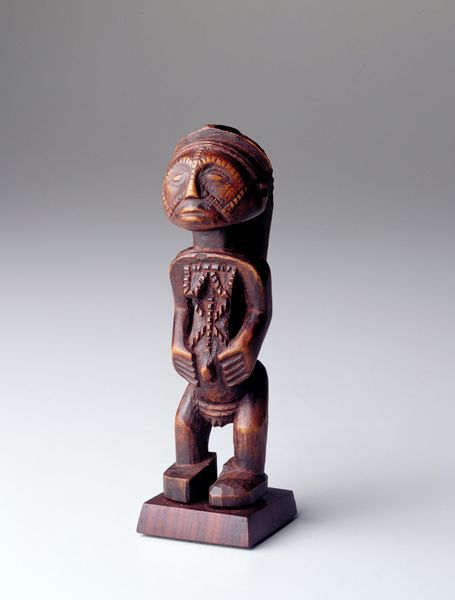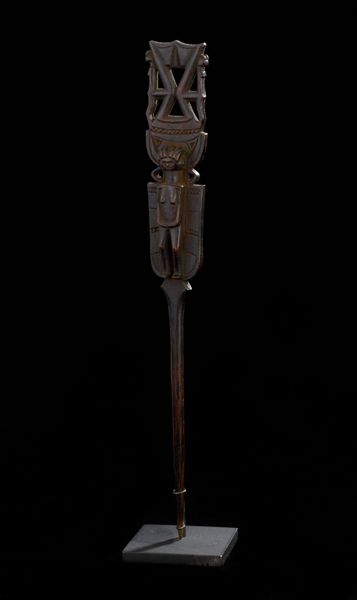
sculpture, wood
#
portrait
#
african-art
#
sculpture
#
figuration
#
sculpture
#
wood
#
yoruba-art
Dimensions: 13 1/4 × 7 5/16 × 3 7/8 in. (33.66 × 18.57 × 9.84 cm)
Copyright: Public Domain
Editor: This is a wooden "Do mask" from around the 20th century, crafted by the Ligbi people. It’s currently housed here at the Minneapolis Institute of Art. What immediately strikes me is how geometric it is, but with this serene, almost…melancholy expression. What do you see in it? Curator: Well, first off, I love that you picked up on the geometry. To me, it whispers of secrets, almost like a code. Look how the face is broken down into these elemental shapes, yet it coalesces into something deeply human, doesn't it? Masks like these, they weren’t just decorations; they were alive, imbued with spirit. The wearer *became* the entity represented. It’s kind of magical, right? I imagine this one dancing, illuminated by firelight… Do you get a sense of that transformation too? Editor: Definitely. The rigid shapes combined with that slight upturn of the mouth…it feels both powerful and strangely vulnerable. Where would something like this have been used? Curator: Ah, good question. This particular mask likely played a role in initiations, maybe even harvest rituals. You know, asking for a little divine intervention to make the yams plumper. The Ligbi people blended Islamic and indigenous beliefs so masks often reflected a rich and unique visual blend. It’s as if they are saying “lets see all the perspectives on these events". See those raised lines? Editor: The ones flanking the nose? Yeah! Curator: My take? Perhaps scarification marks – beauty, identity, belonging, all etched onto one surface. So much meaning packed into one object, wouldn't you agree? Editor: Absolutely! I came in thinking “geometric shapes,” but now I’m seeing stories, histories. Curator: That’s the beauty of it. Art pulls you in, chews you up, and spits you out seeing the world anew!
Comments
minneapolisinstituteofart about 2 years ago
⋮
African masks sometimes feature an animal or person on top; in this case, there’s a rectangular panel with a knob. It represents a Qur’anic board, a kind of plank used throughout Africa as an aid in learning to read and write Arabic for religious purposes. Among the small subgroup of African masks used in Muslim communities during Islamic festivals, this one would have been used by the Do association of the West African Ligbi people and their neighbors during masked dances marking the end of Ramadan, the Islamic holy month of fasting.
Join the conversation
Join millions of artists and users on Artera today and experience the ultimate creative platform.
